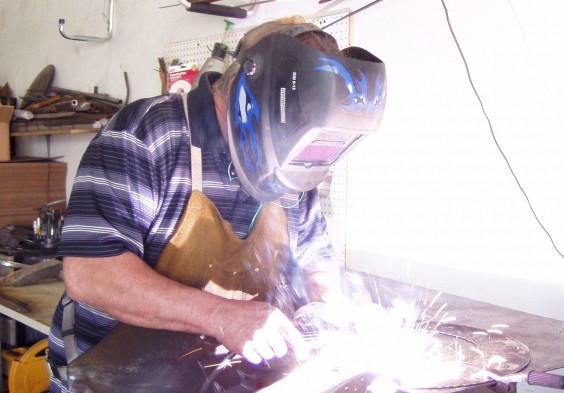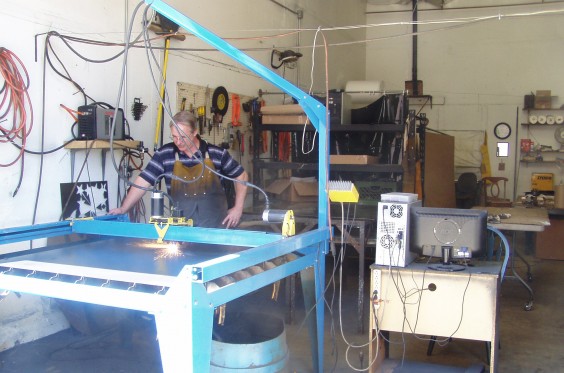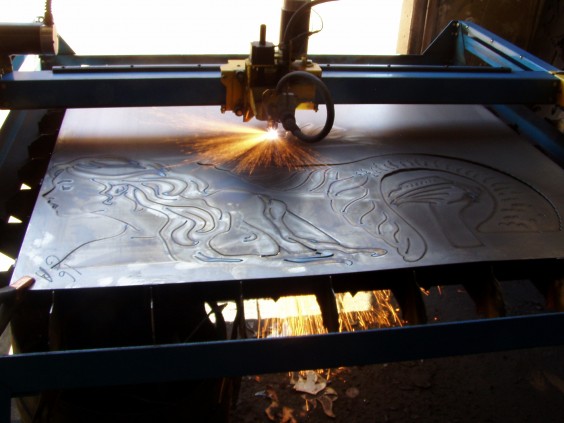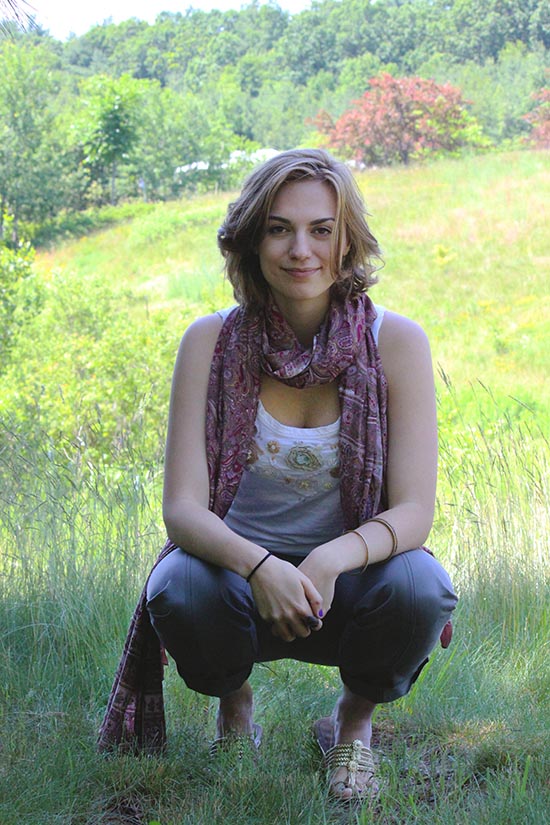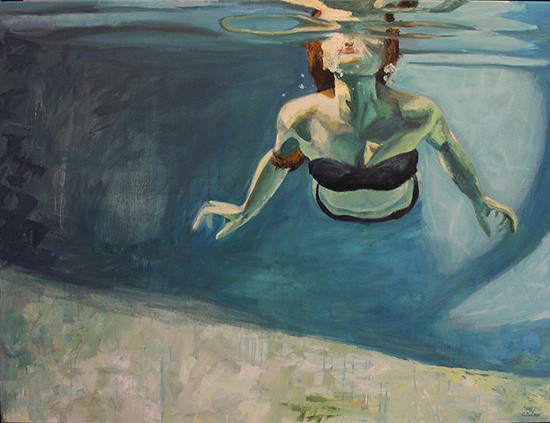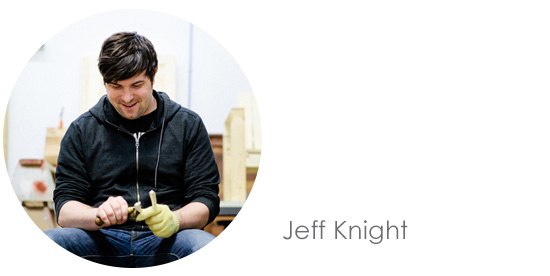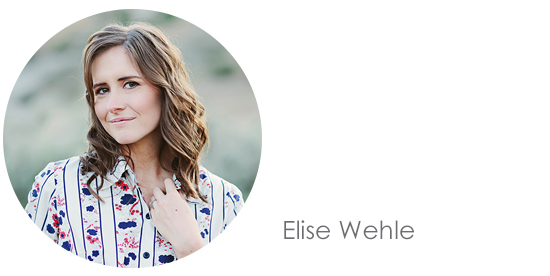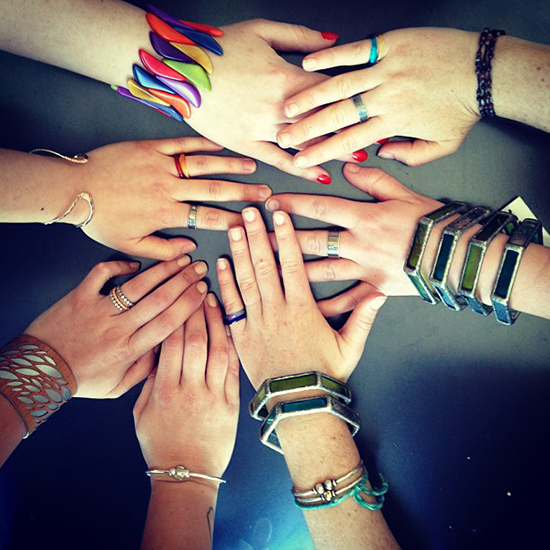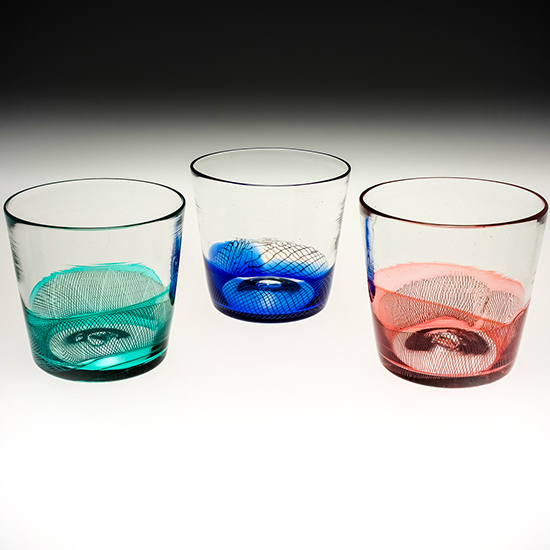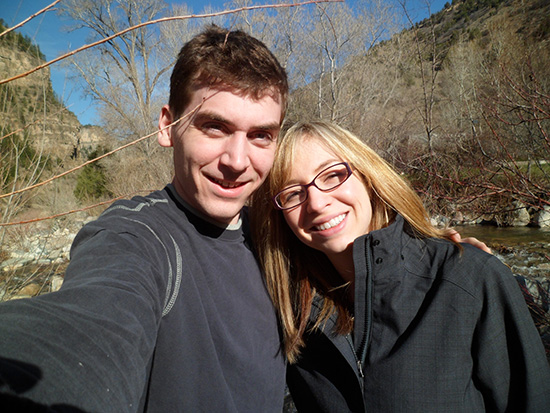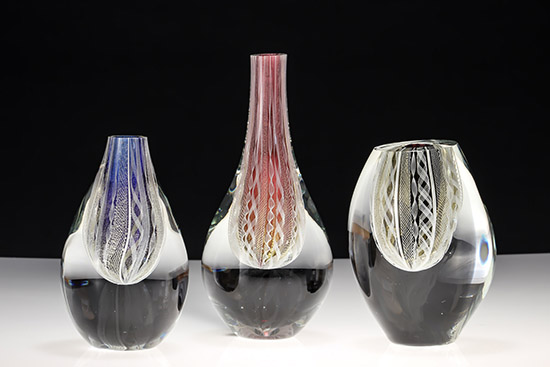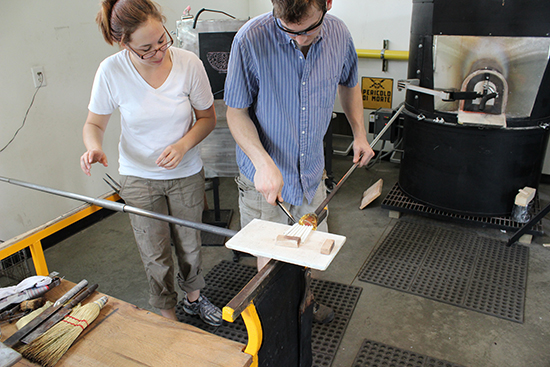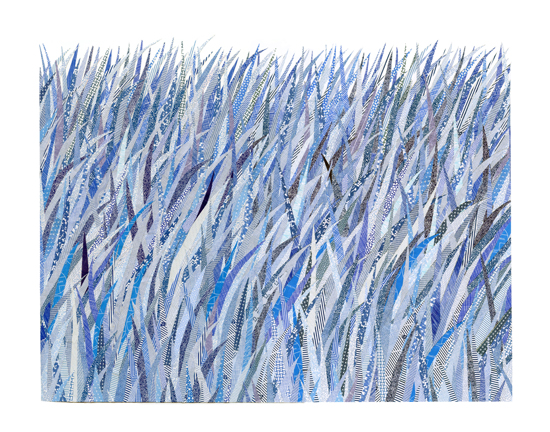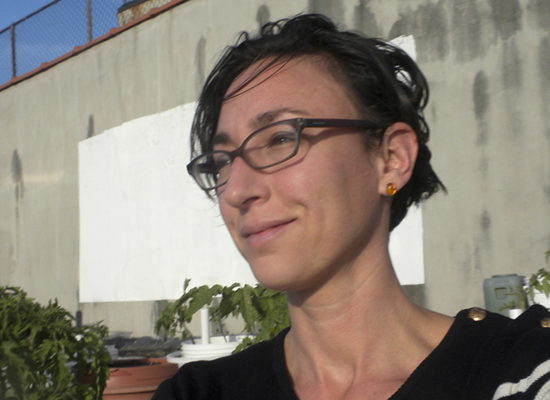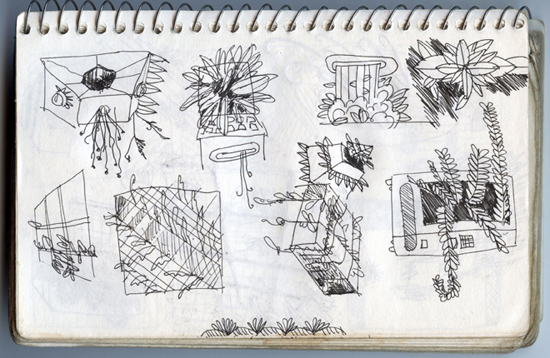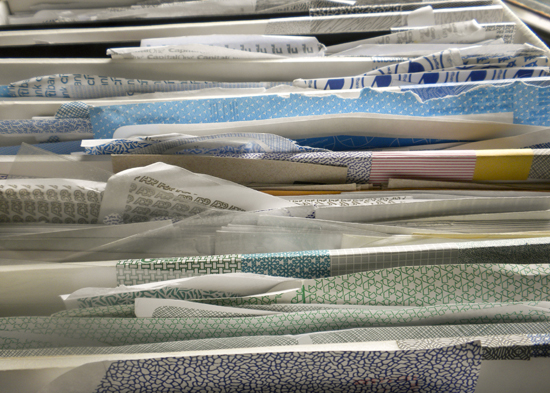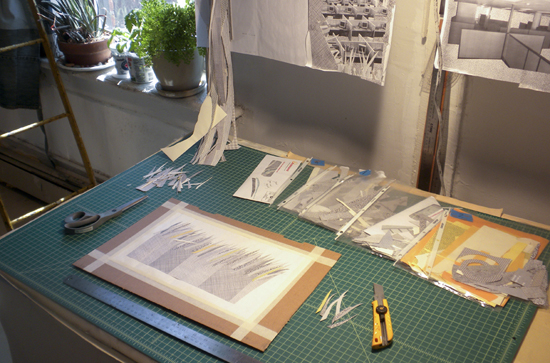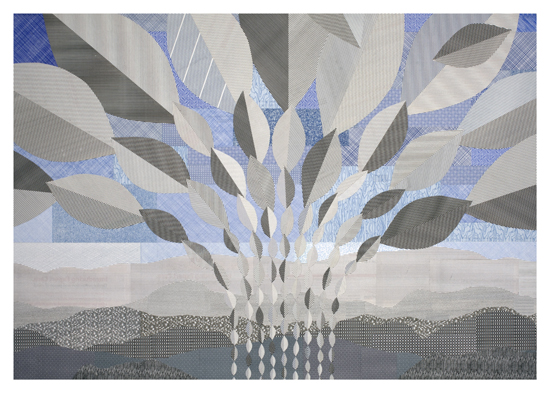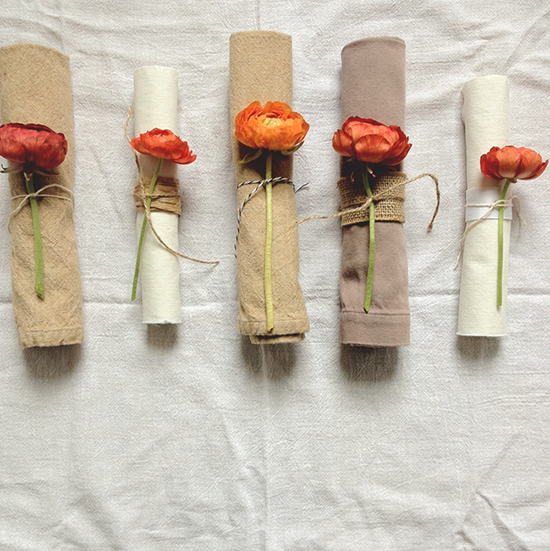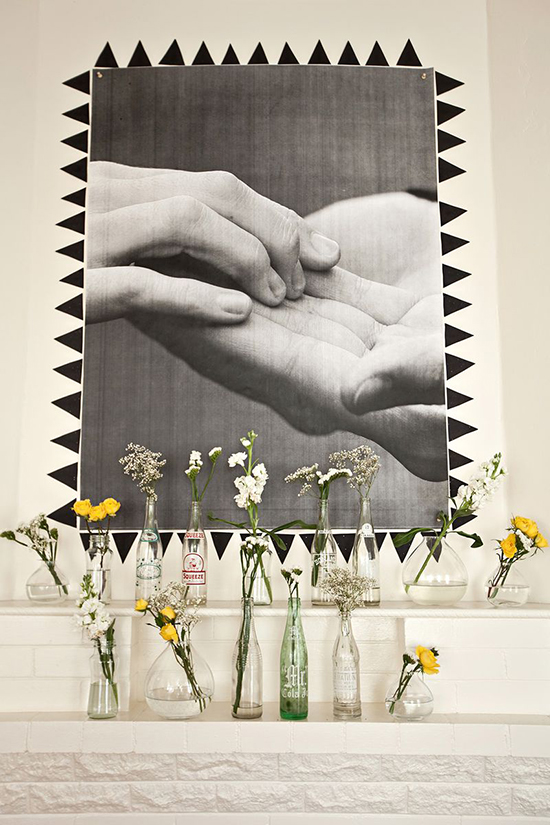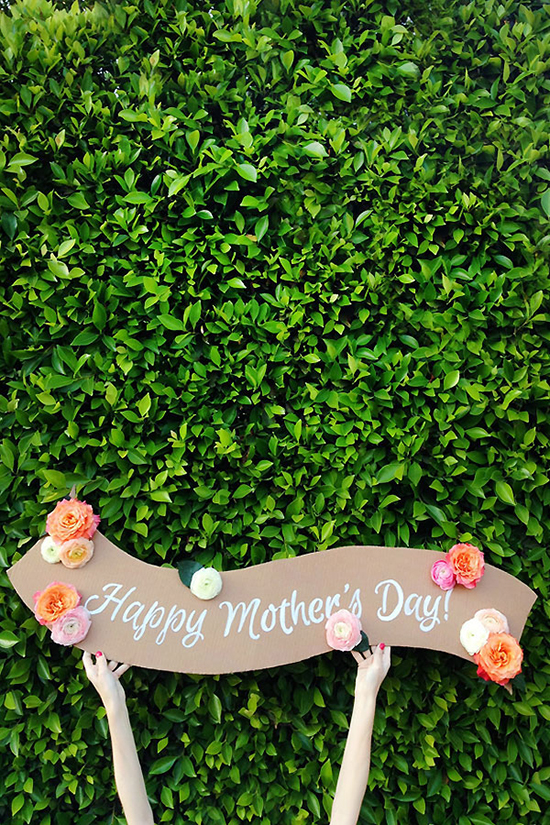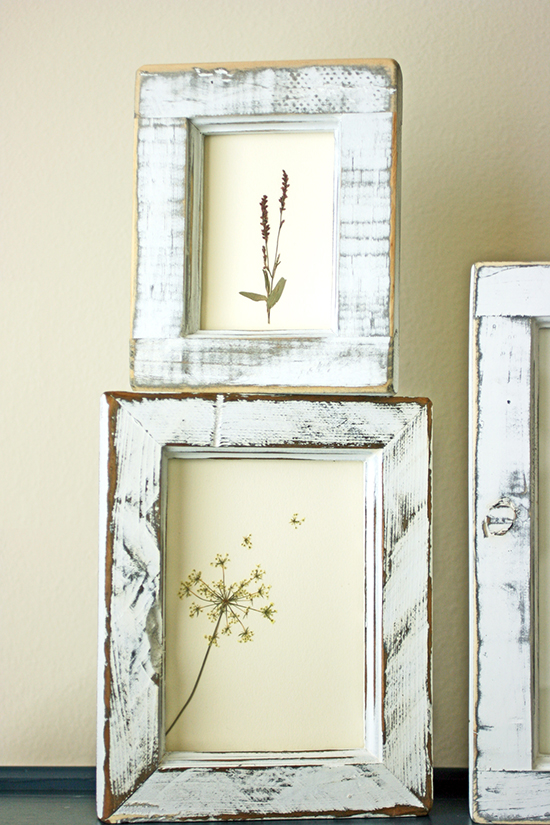You could say that Chris Crooks’ art makes a lot of sparks! It’s true factually as well as metaphorically, as you can see in this photo of him at work on one of his 16-gauge steel creations. Chris loves working in metal because, as he says, “The possibilities are endless. If you can dream it, you can do it.”
He took a somewhat winding road to get to where is now, running his own successful metal art company. After graduating from the Art Institute of Philadelphia in 1984, he worked in advertising, then ran a printing business with his wife, while painting during his free time. Wanting a change of scene, the couple moved to Tucson, Arizona in 1990. There, Chris started a company making solid cast statuary. It was while collaborating with a metal art manufacturer that Chris met his true love, materially speaking: Metal, he realized, was so much more dynamic than plaster. It was in 2001 that he began designing and making his first line of metal sculpture, inspired from the southwest and the Sonoran desert. We were curious to know more about his path to creative fulfillment and success — so we asked him about it!
What’s your studio like? Do you do all the work yourself, or do you have assistants to help with certain tasks?
I rent a space in an industrial park. I started out from my garage, as the business grew, and my wife’s and neighbors’ patience stretched, it was time to move to an industrial space in downtown Tucson. There I can bang and grind at all hours of the night and stretch out a bit. It’s a 1000 square feet of pure metalworking nirvana.
Do you display your work in your own lawn or garden? If so, what kind of reaction have you gotten from it?
I really don’t display much of my garden art, but my friends and neighbors make up for it. I generally don’t give people my art as gifts unless they actually ask, since you are never really sure they like it as much as they are telling you, kind people as they are. With their response to the garden art though, I am never at a loss for a present.
How did you end up working in metal?
It seemed like a natural progression from sculpting in clay to working in metal. My first pieces combined the two, using the metal to augment the plaster, then the plaster to decorate the the metal, and then no plaster at all. Metal is just so fun and versatile, I feel like I’m just getting started.
Do you work regular hours, or do you work when you feel like it?
Well, when you work for yourself – you’re always motivated. OK, maybe not always. Generally, I work something like 60 hours a week. I really don’t have much say in the matter, especially when UncommonGoods comes calling! As a small business owner it really doesn’t feel like work.
What are the biggest challenges to doing this work?
Beyond the logistics of getting all the orders out the door, the biggest challenge is coming up with new designs. New designs and product is the lifeblood of an art company. Fortunately, coming up with new designs is also the funnest thing to do.
Is it dangerous sometimes? What do you do to keep it safe?
Yep, it certainly can be dangerous. I’ve learned my lesson more than once not to disregard safety precautions. Never the same precaution and never more than once. Whenever I’m training somebody, it reminds me how dangerous it can be.
How much metal do you go through in a year?
I use about 400 sheets of 4 x 8 foot metal a year of varying thickness.
How do you get it all to your studio?
It is both picked up and delivered.
You studied Fine Art in college – did you expect to be an artist, or did you think you’d always have a “day job”?
I always wanted to be an artist. I didn’t know if I could pull it off…didn’t really have a clear vision of what being an artist would mean for me. I got a day job at an ad agency out of college, that was fun for a while. Painting was not as rewarding as sculpting, and metal sculpting is completely enjoyable and engaging. It seems to be working so far.
What were your paintings like, back when you were in advertising — were they in any way related to the themes of your metal art? And do you still paint?
Here’s one of my Bar Fly paintings, and recent painting on metal.
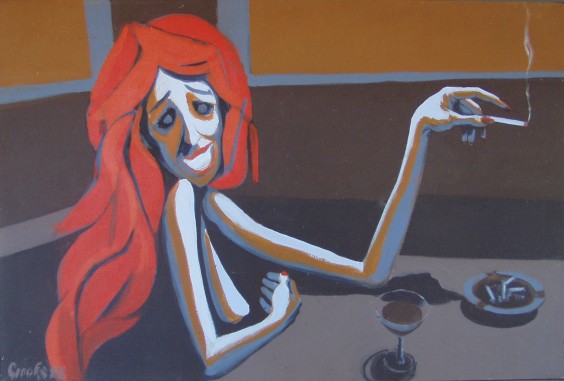
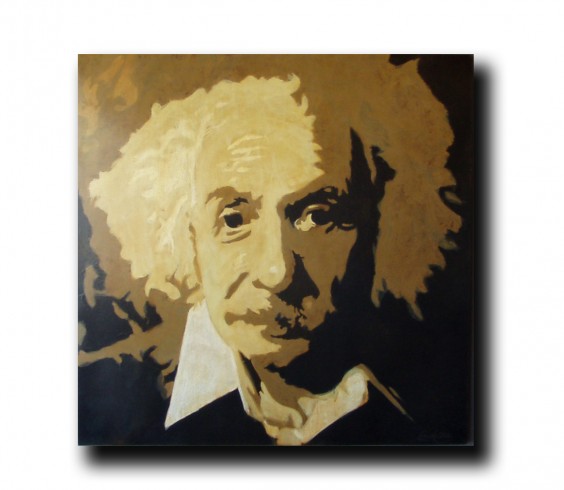
How did you learn the skills of your metal art?
I am completely self-taught.
What do you like about living the artist’s life?
I always wanted to make a living doing something genuinely enjoyable. To get up in the morning raring to go, and never having enough time to do everything you want to do. I remember watching the Crocodile Man Steve Irwin cavorting about wrestling crocs and generally living life large. He was just so happy. What a way to live life. Crikey, now I got some of that.
Do you miss anything about having a regular job/working for somebody else?
Not really. Routine is nice, as long it’s not every day. Coworkers, company paid health care and a 401K are definitely positives.
What do you do for inspiration?
I get back to nature as often as possible to recharge. Honestly, whenever I find the time to be creative there’s generally tons of ideas ready to go.

